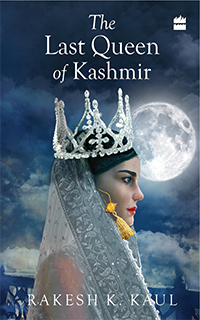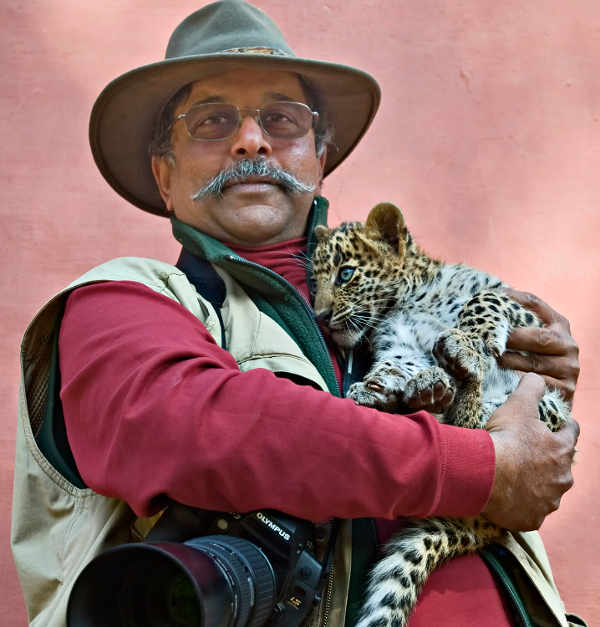|
| |
THIRD ANNUAL IAAC LITERARY FESTIVAL
NYU KIMMEL CENTER, 60 WASHINGTON SQUARE SOUTH, NYC
|
| OCTOBER 7-9, 2016 |
| |
| Saturday, Oct 8 2016 3:45 - 4:45 pm |
|
| |
| AVID@IAAC |
Session 4B
Kashmir: Past, Present, Future |
Rakesh Kaul, John Isaac in conversation with Manu Bhagavan
 |
| |
| |
| |
| Examine the Idea of India, Pakistan and Kashmir; their Origins, Evolution, Points of Views and Alternate Histories and the urgent need to catalogue and narrate memories and stories of the region along with contemporary movements and building people-to-people bridges. Question the role of alternate histories, stories not told by the media, personal tales and memoirs in retelling these stories and transferring the legacy to future generations. |
| |
|
| |
| |
| |
| Rakesh Kaul |
 Rakesh K Kaul, whose family hails from Kashmir, migrated to the US in 1972 after becoming a gold medalist at IIT Delhi. During that year he won a national writing competition organized by a leading American newspaper. In addition to a distinguished business career as a CEO of multi-billion dollar companies in the US he has written extensively for leading newspapers and magazines and been a keynote speaker on the history, politics and culture of Kashmir. He was a founding contributor to the first Chair of India Studies at University of California Berkeley; to the Center for the Advanced Study of India at University of Pennsylvania; to the Mattoo Center for India studies at SUNY and The Arts of Kashmir Exhibition at The Asia Society. He has an MBA from the University of Chicago and a Masters in Electronics from Brown University. Rakesh K Kaul, whose family hails from Kashmir, migrated to the US in 1972 after becoming a gold medalist at IIT Delhi. During that year he won a national writing competition organized by a leading American newspaper. In addition to a distinguished business career as a CEO of multi-billion dollar companies in the US he has written extensively for leading newspapers and magazines and been a keynote speaker on the history, politics and culture of Kashmir. He was a founding contributor to the first Chair of India Studies at University of California Berkeley; to the Center for the Advanced Study of India at University of Pennsylvania; to the Mattoo Center for India studies at SUNY and The Arts of Kashmir Exhibition at The Asia Society. He has an MBA from the University of Chicago and a Masters in Electronics from Brown University. |
| |
 The Last Queen of Kashmir : Set in the 14th century at a unique inflection point in the history of the Valley, The Last Queen of Kashmir is a richly re-imagined, sweeping saga of a woman, a kingdom and a civilization in turmoil. The Last Queen of Kashmir : Set in the 14th century at a unique inflection point in the history of the Valley, The Last Queen of Kashmir is a richly re-imagined, sweeping saga of a woman, a kingdom and a civilization in turmoil.
Beautiful young Kota - royal by birth, a graduate by education and warrior by training, is thrust into the intrigues of the court of Kashmir. Turcoman emissaries and Tibetan chieftains are vying for the legendary riches of a land that now hovers perilously close to bankruptcy under weak stewardship. The wizened king wants to marry Kota to beget an elusive heir. When her father, the commander-in-chief of the army, turns down the offer, it sets into motion a course of treachery and betrayal.
Kota is forced to marry a Ladakhi usurper, the very man who had murdered her father. The young woman dreaming of love is transformed by her renunciation into a wise regent with steely determination. Trade flourishes again and her people are saved from starvation. But as Persian immigrants change the fabric of society and her Ladakhi consort converts to Islam, the ancient laws that uphold the kingdom are challenged. Kotarani must continually strike a balance in the winds of change sweeping the Valley. |
| |
|
| |
John Isaac |
 JOHN ISAAC JOHN ISAAC was born in a village near Trichy in southern India in 1943. He grew up loving music and did anything he could to hear the songs of rock and roll, as well as country music. He learned the guitar and played and sang in a group in what is now known as Chennai (Madras in those days). Hoping to fulfill his dream of becoming a singer, John left India in 1968 and arrived in New York City with his guitar and 75 cents in his pocket. Struggling to make a living, he joined the United Nations as a clerk after a woman heard him singing on the street and asked him to join the UN choir. They needed a good baritone. JOHN ISAAC JOHN ISAAC was born in a village near Trichy in southern India in 1943. He grew up loving music and did anything he could to hear the songs of rock and roll, as well as country music. He learned the guitar and played and sang in a group in what is now known as Chennai (Madras in those days). Hoping to fulfill his dream of becoming a singer, John left India in 1968 and arrived in New York City with his guitar and 75 cents in his pocket. Struggling to make a living, he joined the United Nations as a clerk after a woman heard him singing on the street and asked him to join the UN choir. They needed a good baritone.
He sang in the choir for a while, but eventually the photography world drew him in, first as a dark room technician when an opening became available in the United Nations’ Department of Public Information, and then eventually as head of the photography department. For twenty years, John traveled to over 100 countries as a photojournalist for the UN. He covered the war in Lebanon, the famine in Ethiopia, the plight of the Vietnamese boat people, the Bosnian war and the Rwandan genocide. After back-to-back coverage in Bosnia and Rwanda, John suffered a nervous breakdown that led him to give up photography and go on medical leave. Many months later, a sunflower in a neighbor’s backyard with a butterfly on it led John to rush back indoors to unpack his cameras. After a brief absence, he was back in the photography world. He would never go on a UN assignment again, but was promoted to head up the UN photo unit.
In 1998, John took an early retirement from the UN and switched gears as he picked up a digital camera and began focusing his attention on nature and animals. John is passionate about saving the tigers of India before they disappear from the wild, and has spent his “retired” life visiting the national parks of India to capture their majestic beauty. John has also visited such varied places as Iceland for the amazing landscapes, Alaska for the grizzly bears, Machias Seal Island, Maine for the puffins, Masai Mara in Kenya and Etosha National Park in Namibia for the wildlife. His 40-year photography career has led to participation in many workshops, including a yearly appearance at the Maine Media workshops in Rockport. |
| |
 John has authored many books, including a series of four books called “Children in Crisis”. Through this series, John gives a first-hand account of the daily lives of children and their families in regions around the world. He also was featured in a book called “Photojournalist in the Middle of Disaster” about his coverage around the world while working for the UN. He co-authored “Endangered Peoples” for the Sierra Club and “Coorg: Land of the Kodavas” about a coffee growing region in southern India. Seven of his photographs were featured in the Day in the Life of Africa book. His most recent book was published by W.W. Norton called the “Vale of Kashmir”. His next big project will be to release a book on the tigers of India. John has authored many books, including a series of four books called “Children in Crisis”. Through this series, John gives a first-hand account of the daily lives of children and their families in regions around the world. He also was featured in a book called “Photojournalist in the Middle of Disaster” about his coverage around the world while working for the UN. He co-authored “Endangered Peoples” for the Sierra Club and “Coorg: Land of the Kodavas” about a coffee growing region in southern India. Seven of his photographs were featured in the Day in the Life of Africa book. His most recent book was published by W.W. Norton called the “Vale of Kashmir”. His next big project will be to release a book on the tigers of India.
Throughout his career, John has received numerous national and international awards, including: Best Outdoor Photographer of the Year from Graphis Magazine (1991), Professional Photographer of the Year (1993) by the Photographic Manufacturers and Distributors Association, and the Lifetime Achievement Award (2000) from the International Photographic Council.
In 1991 the legendary Audrey Hepburn chose one of John’s photographs of herself carrying an Ethiopian child as one of her all time favorites for American Photo magazine. John worked closely with Miss Hepburn while she was UNICEF Ambassador, traveling with her to many countries.
John’s philosophy throughout his photography career has been to treat every living thing, human, plant or animal, with respect and awe. In 2017, he will be having a show at the Carter Burden Gallery in Manhattan. |
| |
|
| |
| Manu Bhagavan
|
 Manu Bhagavan is a historian and author or (co-) editor of 5 books, most notably the critically acclaimed THE PEACEMAKERS/INDIA AND THE QUEST FOR ONE WORLD (HarperCollins India, 2012; Palgrave Macmillan, 2013). He teaches at Hunter College and the Graduate Center, The City University of New York, where he is Professor of History and Human Rights. Manu has been a fellow of the American Council of Learned Societies and has served as President of the Society for Advancing the History of South Asia and as Chair of the Human Rights Program at the Roosevelt House Public Policy Institute. Manu regularly comments in the media about matters related to India, foreign relations, human rights, and the United Nations. A piece he wrote on global authoritarianism for Quartz went viral internationally and was translated into German as the lead cover article of the May 2016 issue of the Berliner Republik magazine. He has also written for, been interviewed by, or appeared on: The New York Times, Washington Post, WNYC radio, CNBC, National Public Radio (NPR), Rajya Sabha Television (India), CNN-IBN, BBC World Radio,and Al Jazeera English, among other places. Follow him on Twitter @ManuBhagavan. http://manubhagavan.com Manu Bhagavan is a historian and author or (co-) editor of 5 books, most notably the critically acclaimed THE PEACEMAKERS/INDIA AND THE QUEST FOR ONE WORLD (HarperCollins India, 2012; Palgrave Macmillan, 2013). He teaches at Hunter College and the Graduate Center, The City University of New York, where he is Professor of History and Human Rights. Manu has been a fellow of the American Council of Learned Societies and has served as President of the Society for Advancing the History of South Asia and as Chair of the Human Rights Program at the Roosevelt House Public Policy Institute. Manu regularly comments in the media about matters related to India, foreign relations, human rights, and the United Nations. A piece he wrote on global authoritarianism for Quartz went viral internationally and was translated into German as the lead cover article of the May 2016 issue of the Berliner Republik magazine. He has also written for, been interviewed by, or appeared on: The New York Times, Washington Post, WNYC radio, CNBC, National Public Radio (NPR), Rajya Sabha Television (India), CNN-IBN, BBC World Radio,and Al Jazeera English, among other places. Follow him on Twitter @ManuBhagavan. http://manubhagavan.com
|
|
|

